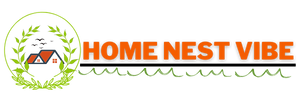There was a time when teams managed their entire workflow on whiteboards, sticky notes, or hastily shared spreadsheets. Meetings ran long, deadlines got pushed, and no one really knew who was responsible for what. While those days sound almost nostalgic, the truth is—inefficient scheduling still drains more hours than most of us realize. In today’s fast-moving world, where a single missed deadline can ripple across multiple projects, businesses are leaning on smarter tools to keep things on track.
One of the most underrated yet powerful solutions out there is schedule accountability software. At first glance, the phrase might feel overly technical, but really it’s about one simple thing: making sure the right people get the right tasks done at the right time. Instead of juggling Slack messages, endless email threads, or late-night reminders, accountability software builds structure into the daily grind. It makes project ownership visible, so when the team succeeds, credit is clear—and when things slip, there’s no hiding behind vague excuses.
The Messy Reality of Team Coordination
Let’s be honest—everyone’s got at least one horror story about a project gone sideways. Maybe it was that marketing campaign that launched two weeks late because design was waiting on copy. Or the product update that stalled because engineering assumed QA already had the test plan. In most of these cases, the problem wasn’t a lack of talent or motivation. It was simply poor visibility into the schedule.
This is why many managers are shifting from “set it and forget it” timelines to tools that actively highlight risks, dependencies, and progress in real-time. The old approach of updating a shared calendar once a week just doesn’t cut it anymore. Teams need sharper insights, faster feedback loops, and platforms that talk to each other instead of living in silos.
Reporting Is the Glue That Holds It Together
Another game-changer is the rise of the schedule audit & reporting tool. Think of it as a digital paper trail combined with a health check for your schedule. Instead of manually digging through project files to figure out why something slipped, you get automated reports that track delays, progress rates, and where resources are bottlenecked.
For leadership, this isn’t just a nice-to-have—it’s critical. When executives look at project dashboards, they don’t want sugarcoated updates. They want the truth, even if it stings. Transparent reporting builds trust between teams and management, and it creates opportunities to spot problems before they spiral into bigger ones. After all, it’s a lot easier to fix a one-week delay when you catch it early than to explain why the entire quarter’s roadmap is off-track.
Measuring Delays Without Blame
Of course, accountability and reporting are only as useful as the context they provide. That’s where something like a schedule delay metric platform earns its keep. This isn’t about pointing fingers or singling out individuals. Instead, it’s about spotting patterns.
Maybe you discover that certain types of projects always stall in the same handoff between teams. Or perhaps you notice that when projects involve more than three external stakeholders, delays spike by 20%. These insights are gold—not because they call someone out, but because they highlight systemic issues that can be fixed. The best platforms frame delay metrics as opportunities for continuous improvement, not as ammunition for blame games.
Why This All Matters More Than Ever
Workplace dynamics have shifted dramatically in the last few years. Remote and hybrid setups, global collaboration, and cross-functional teams are the norm now. That flexibility comes with perks, but also with more chances for things to fall through the cracks. When you can’t pop by someone’s desk for a quick check-in, you need digital tools to fill that gap.
Beyond just keeping projects on track, smart scheduling software also plays a role in culture. A transparent schedule builds trust. It reduces micromanagement because everyone can see progress for themselves. It also takes the guesswork out of resource planning. Instead of burning out the same few high performers, managers can balance workloads based on clear data.
Balancing Structure With Flexibility
There’s a valid concern that comes up when you start talking about schedules and metrics: doesn’t it risk becoming too rigid? No one wants to feel like they’re working under a microscope, or that creativity has to fit into a box with timestamps. That’s where the nuance comes in.
The best scheduling tools don’t force you into an inflexible mold—they adapt to your workflow. Some projects thrive on daily stand-ups and detailed checklists, while others need looser guardrails. A healthy balance means you get the accountability and reporting you need without stifling the team’s natural flow.
A Real-World Example
Picture a mid-sized construction company juggling multiple projects across the city. Without proper scheduling, one delayed materials shipment can throw off not just one site, but four others waiting on the same supplier. By adopting a reporting tool and delay-metric tracking, the company notices a pattern: deliveries from one vendor are consistently late by two days. Armed with this data, they negotiate better terms—or switch suppliers entirely.
Now scale that up to software development, marketing, or even event planning. The principle is the same: when you measure what’s happening in real-time, you can adapt faster and prevent small hiccups from turning into budget-draining disasters.
The Future of Scheduling Tools
Looking ahead, it’s likely that these tools will only get smarter. With AI creeping into almost every corner of the workplace, scheduling platforms will probably predict risks before they even happen. Imagine getting an alert that says, “Based on past performance, this task has a 70% chance of delay unless resources are reallocated.” That’s not sci-fi—it’s already starting to happen.
But at the end of the day, software is only part of the story. Tools provide structure, but people provide the drive. A fancy dashboard won’t save a project if the culture doesn’t encourage honesty, ownership, and collaboration.
Wrapping It All Up
Schedules have always been the backbone of projects. But the tools we use to manage them have finally caught up to the complexity of modern work. From accountability to audits, and from reporting to delay metrics, the right systems give teams a fighting chance at hitting their goals without burning out.
If there’s one takeaway here, it’s this: a good scheduling setup isn’t just about managing time—it’s about managing trust. When everyone sees the same reality, when reporting is transparent, and when delays are measured without judgment, teams stop wasting energy on finger-pointing and start focusing on solutions.
So maybe the next time you’re tempted to dismiss scheduling software as “just another tool,” remember—it might be the quiet partner that keeps your projects, your team, and maybe even your sanity on track.





